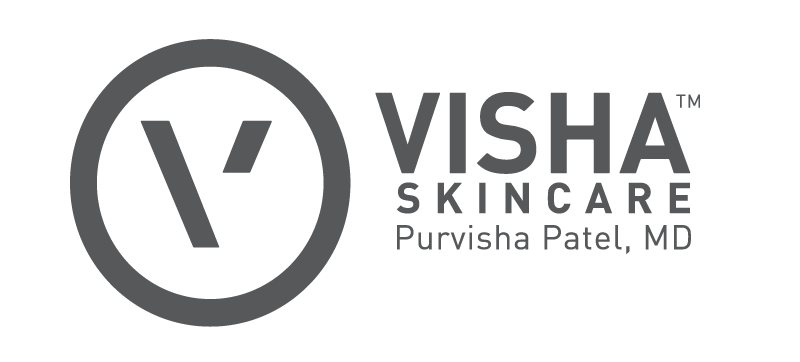
Well+Good posted "Your step-by-step guide to treating (and preventing) eyebrow dandruff" featuring Dr. Purvisha Patel.
In the article, Dr. Patel explains what causes dandruff and who is most susceptible to it.
Your scalp can get flaky, your skin can get flaky, and even your eyebrows can get flaky once in a while. Most people have tips and tricks on hand for dealing with these flakes, but when the issue morphs into dandruff (you’ll note that small white flakes turn into flat, oily yellow ones), your solution isn’t simply to exfoliate. And if you’re dealing with a bout of eyebrow dandruff, that sentiment rings doubly true.
Usually, flaking—whether it’s on the face, the scalp, or the brows—happens because of excessive dryness. But dandruff is actually caused by an oil-loving yeast. “Contrary to popular belief, dandruff isn’t caused by dry skin, but rather by a fungus… the same one that causes scalp dandruff,” says Michelle Wu, master therapist at Evertrue Microblading. “The presence of this fungus causes itchy, flaky skin.” And no one’s exactly going for the flaky look when they’re grooming their brows.
What causes eyebrow dandruff
Dandruff is caused by a yeast-type organism found on the scalp called pityrosporum ovale (P. ovale) or malassezia furfur (M. furfur). “These happen from the division of cells,” says trichologist Penny James of Penny James Salon. “In normal skin conditions, the stratum corneum consists of about 30 layers of closely consistent keratinized cells. When the skin has flakes over it as is the case with dandruff, there are about 10 layers badly formed, with haphazardly arranged cells that have moved from the stratum gerninativum [the deepest layer of your skin] very quickly.”
What happens is that your body responds to the yeast by flaking skin off, which is something that board-certified dermatologist Purvisha Patel, MD, founder of Visha Skincare, has previously told us. “This yeast-like organism loves to grow in damp, warm environments, and thrives in those with oily hair, or those that use edible oils on their heads,” explains Dr. Patel. Some people are more prone to getting dandruff, such as those with oilier scalps or those that use edible oils—like coconut and olive oils—on their body.
Eyebrow dandruff can also be a symptom of another skin condition. “It’s often affiliated with seborrheic dermatitis, psoriasis, eczema, and other skin conditions that start on the scalp and can spread all over the body in patches,” says James, who points out that this type of flaking is often triggered in the wintertime. “This time of year, eyebrow dandruff is prevalent due to the cold weather, or can be partially due to stress or a change in your diet.”
If neither of the above situations is the culprit behind your flakes, and the spot in question is only in your brows, James says that you could have an allergy to a face or eyebrow product, so check the labels of anything new that you’ve introduced into your routine.
How to treat eyebrow dandruff
Since eyebrow dandruff means you’ve got something a bit harder to nix than dry skin flakes, its treatment method means more than simply exfoliating and hydrating your brows. In a lot of cases, your dandruff-fighting hair-care product can work for the dandruff that’s lurking in your arches, too.
“The best way to deal with eyebrow dandruff is the same way one deals with scalp dandruff: by using an anti-dandruff shampoo like Head & Shoulders,” says Wu. Typically, these products contain active ingredients zinc pyrithione, ketoconazole, or selenium disulfide, which all help to fight the dandruff with their antifungal properties. “I would recommend a cream containing three percent coal tar and three percent salicylic acid applied every two days, avoiding contact with the eyes,” adds James of her go-to flake-fighting ingredients. “Also, if your scalp has been itchy and you’ve noticed flakes or redness and soreness, the easy treatment is a ketoconazole two-percent shampoo, which is something that would be prescribed by your doctor.”
It can sound strange to apply a shampoo to your eyebrows, but the pros recommend treating it as you would with a cleanser: Wipe some of the product onto your brow area, let it sit for a bit to let the ingredients penetrate, then lather and rinse.
When you’re using your dandruff-squelching product of choice, be patient—it’s not a quick fix (unfortunately). According to Wu, it will typically take about two to three weeks to clear up eyebrow dandruff. If your brow flakes just aren’t clearing up, both Wu and James recommend booking an appointment with your dermatologist before you can go back to your regularly-programmed arch-grooming routine.
It can also help clear things up if you try these 6 essential oils for dandruff (yep, they can help fight flakes, too!). And this is what you need to know about fungal acne treatments, which, BTW, is basically facial dandruff.
